Table of content
Blanched baby bok choy, or bái zhuó xiǎo yóu cài in Mandarin, is a quintessential Chinese dish that celebrates simplicity, freshness, and the natural flavors of vegetables. This method of cooking, known as bái zhuó (blanching), involves briefly boiling the greens in salted water and then shocking them in ice water to retain their vibrant color, crisp texture, and nutritional value. The result is a plate of tender yet crunchy baby bok choy, lightly dressed with a savory garlic-ginger sauce that elevates its mild, earthy taste. Whether you’re a novice cook or a seasoned home chef, mastering this dish is a rewarding endeavor that requires minimal ingredients but yields maximum flavor. In this comprehensive guide, we’ll explore the history of blanched baby bok choy, its health benefits, and a detailed, foolproof recipe to help you recreate this classic in your own kitchen.
The Origins and Cultural Significance of Blanched Baby Bok Choy
Baby bok choy, a member of the Brassica rapa family, is a staple in Chinese cuisine. Its name translates to “white vegetable” in Cantonese, referencing its pale, crunchy stems and emerald-green leaves. Unlike mature bok choy, which has thicker stems and a slightly bitter edge, baby bok choy is smaller, sweeter, and more tender, making it ideal for quick-cooking methods like blanching.
The technique of blanching vegetables has ancient roots in Chinese culinary traditions. It was originally developed as a way to preserve the color, texture, and nutrients of leafy greens during the warmer months when fresh produce was abundant. Over time, blanching evolved into a culinary art, with chefs experimenting with aromatic oils, soy-based sauces, and aromatic herbs to create balanced flavors. Today, blanched baby bok choy is served in homes, restaurants, and street food stalls across China and around the world, often as a side dish to accompany richer meals like braised meats or fried rice.
Health Benefits of Baby Bok Choy
Baby bok choy is a nutritional powerhouse, packed with vitamins, minerals, and antioxidants. Here’s why you should incorporate it into your diet:
- Rich in Vitamins: It’s an excellent source of vitamin C, which supports immune health, and vitamin K, essential for bone health and blood clotting.
- High in Fiber: A single serving provides a significant portion of your daily fiber needs, aiding digestion and promoting gut health.
- Low in Calories: With only 9 calories per cup, it’s a guilt-free addition to any meal.
- Antioxidant-Rich: Contains beta-carotene and flavonoids, which combat oxidative stress and reduce inflammation.
- Hydrating: Composed of over 95% water, it helps maintain hydration and supports healthy skin.
Blanching preserves more nutrients than frying or prolonged boiling, making this dish a smart choice for health-conscious eaters.
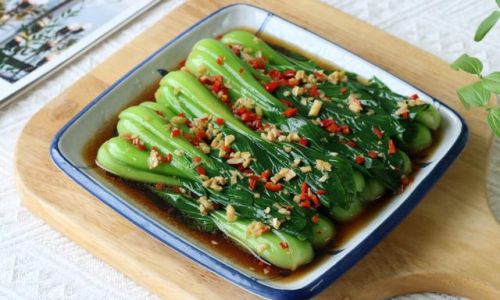
Ingredients You’ll Need
The beauty of blanched baby bok choy lies in its simplicity. You’ll need just a handful of ingredients to create a dish that’s both elegant and satisfying:
- 1 pound (450g) baby bok choy: Look for fresh, vibrant green heads with firm stems. Avoid wilted or yellowing leaves.
- 3 garlic cloves, minced: Adds a pungent, aromatic kick.
- 1-inch (2.5cm) piece of fresh ginger, peeled and grated: Provides a warm, slightly spicy flavor.
- 2 tablespoons soy sauce: Use low-sodium soy sauce if preferred.
- 1 tablespoon sesame oil: For a nutty, toasty aroma.
- 1 teaspoon sugar: Balances the saltiness of the soy sauce.
- 1/4 cup vegetable oil (or peanut oil): For frying the aromatics.
- 1/4 teaspoon red pepper flakes (optional): Adds a touch of heat.
- Salt: To season the blanching water.
- Ice water bath: To halt cooking and preserve color.
Equipment Checklist
To streamline the cooking process, gather these tools beforehand:
- A large pot for blanching.
- A slotted spoon or tongs for handling the greens.
- A colander or salad spinner for draining.
- A mixing bowl for the ice bath.
- A small saucepan or wok for preparing the sauce.
- A serving platter or plate.
Step-by-Step Recipe
Preparing the Baby Bok Choy
- Trim the ends: Use a sharp knife to slice off the root end of each baby bok choy head, about 1/4 inch (0.5cm) above the base. This separates the leaves while keeping them intact.
- Clean thoroughly: Rinse the greens under cold running water, gently separating the leaves to remove any dirt or grit. Pay special attention to the base, where soil often accumulates.
- Dry the leaves: Pat the baby bok choy dry with a clean kitchen towel or paper towels. Excess moisture can dilute the blanching water and cause splattering during frying.
Blanching the Greens
- Boil the water: Fill a large pot with 4–6 cups of water and bring it to a rolling boil over high heat. Add 1 tablespoon of salt to season the water.
- Prepare the ice bath: Fill a mixing bowl halfway with ice cubes and cold water. Set it aside near the stove.
- Blanch the baby bok choy: Carefully add the greens to the boiling water. Use tongs to submerge them fully. Cook for 1–2 minutes until the stems are tender but still crisp. Overcooking will result in mushy, dull-colored greens.
- Shock in ice water: Immediately transfer the blanched greens to the ice bath using tongs or a slotted spoon. Let them chill for 1–2 minutes to stop the cooking process.
- Drain and pat dry: Remove the greens from the ice bath and shake off excess water. Lay them on a clean kitchen towel or paper towels to dry further.
Preparing the Aromatic Sauce
The sauce is the heart of this dish, infusing the blanched greens with umami-rich flavor.

- Heat the oil: In a small saucepan or wok, heat 1/4 cup of vegetable oil over medium heat until it shimmers (about 30 seconds).
- Sauté the aromatics: Add the minced garlic and grated ginger to the hot oil. Stir continuously for 30–45 seconds until fragrant but not browned. Burnt garlic will taste bitter, so keep a close eye.
- Add flavorings: Stir in the soy sauce, sesame oil, sugar, and red pepper flakes (if using). Reduce the heat to low and simmer for 1–2 minutes to meld the flavors. Remove from heat immediately to prevent burning.
Assembling the Dish
- Arrange the greens: Place the blanched baby bok choy on a serving platter, fanning out the leaves to create an attractive presentation.
- Drizzle the sauce: Pour the warm garlic-ginger sauce evenly over the greens, ensuring each leaf is coated.
- Garnish: For an extra touch, sprinkle with toasted sesame seeds or thinly sliced green onions.
Tips for Perfect Blanched Baby Bok Choy
- Don’t Overcrowd the Pot: Blanch the greens in batches if needed to prevent overcrowding, which lowers the water temperature and leads to uneven cooking.
- Test for Doneness: The stems should be tender enough to pierce with a fork but still offer slight resistance. The leaves should wilt slightly but retain their vibrant green hue.
- Adjust the Seasoning: Taste the sauce before pouring it over the greens. Add a splash of water if it’s too salty, or a pinch of sugar to balance bitterness.
- Use Fresh Ingredients: Stale garlic or ginger can ruin the dish’s flavor. Always opt for fresh, firm produce.
- Customize the Sauce: Experiment with additions like oyster sauce, rice vinegar, or a drizzle of chili oil for varying flavor profiles.
Common Mistakes to Avoid
- Overcooking the Greens: Blanching is a quick process. Remove the greens from the boiling water as soon as they turn bright green.
- Skipping the Ice Bath: This step is crucial for locking in color and texture. Without it, the greens will continue to cook and lose their vibrancy.
- Using Too Little Oil: The sauce needs enough oil to coat the greens without pooling at the bottom of the plate.
- Not Drying the Greens Properly: Excess moisture will dilute the sauce and make the dish soggy.
Variations and Serving Ideas
Blanched baby bok choy is incredibly versatile. Here are some ways to adapt the recipe:
- Add Protein: Toss in cooked shrimp, tofu, or sliced chicken breast for a complete meal.
- Spice It Up: Top with a sprinkle of Sichuan peppercorns or a drizzle of spicy chili crisp.
- Vegetarian Twist: Swap soy sauce for tamari and use sesame oil for a gluten-free version.
- Pair with Noodles: Serve alongside lo mein or chow mein for a heartier dish.
Storing Leftovers
Blanched baby bok choy is best enjoyed immediately, but leftovers can be stored in an airtight container in the refrigerator for up to 2 days. Reheat gently in a skillet with a splash of water to prevent drying out.
Conclusion
Blanched baby bok choy is a testament to the beauty of simplicity in cooking. With just a few ingredients and minimal effort, you can create a dish that’s both visually stunning and deeply satisfying. Whether you’re serving it as a side at a dinner party or enjoying it as a light lunch, this recipe is sure to impress. By mastering the art of blanching and balancing flavors, you’ll not only elevate your culinary skills but also pay homage to a time-honored Chinese tradition. So grab a bunch of baby bok choy, fire up your stove, and let the magic of bái zhuó unfold in your kitchen. Your taste buds—and your body—will thank you.
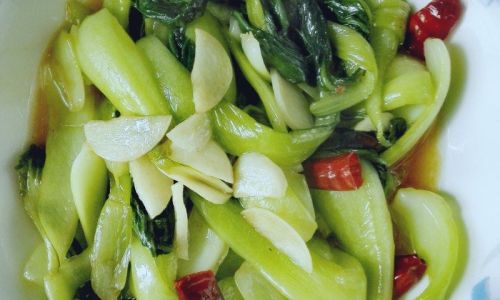



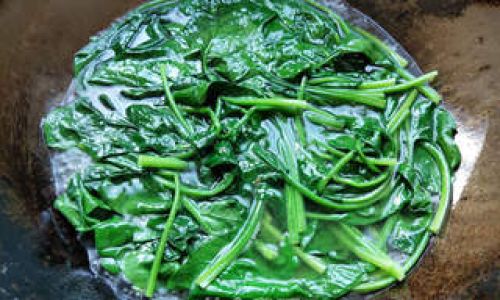
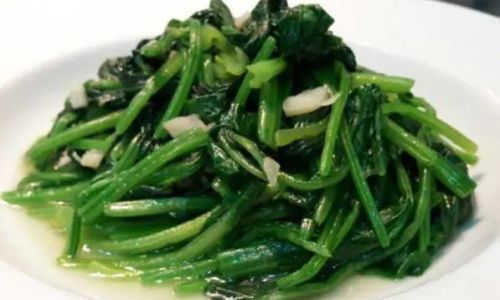
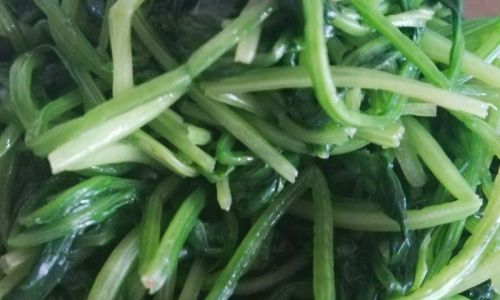
0 comments